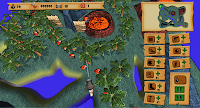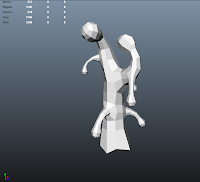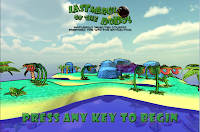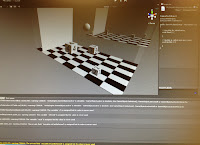I had an interesting experience this week, as we submitted
Last March of the Dodos to Steam Greenlight--finally! From this experience (or, rather, collection of experiences), I learned that you must pick the forums and distribution channels upon which you release your projects wisely. Communities have certain expectations, and if those expectations are not precisely met, then they will let you know in no uncertain terms. Selecting the right platform for release is not unlike determining your target market as you develop your game. Further, even if you perfectly match your game design and aesthetics to your target market, you still have to release or distribute your game in places generally populated by your target market. In short,
Last March of the Dodos might not be the best fit for Steam Greenlight as far as the community is concerned.
That's not to say that everyone on Steam Greenlight dislikes our game concept, nor even that everyone on Steam Greenlight thinks alike. In fact, we have several hundred "Yes" votes from the community to get our game on the platform, and the average game in the
top 50 on the service only has 57% "Yes" votes. This brings me to my second point: you cannot please every gamer out there, so don't try to do so. Figure out the kinds of people who want to play the kind of game you're making, and tailor the experience to them. And release the game in a place where they'll find it! It seems that the Steam community is less welcoming of quirky student projects than of what they are used to: high-production-value-fueled hardcore games. That is in no way meant to be an excuse for whether or not we get the "Greenlight," since better decisions and more dedication throughout production would have made the game more impressive.
Finally, while we would have loved to see it on Steam (and we're still holding out hope), we did not expect it to end up there. This was a low-investment experiment to see how our game would fare publicly at this stage, and it has been a great learning experience. To see what will happen in a community when they get their first glimpse of your game is a great opportunity to learn, evaluate, and make improvements as final decisions are made and the last leg to official publication is run.
***
Last March of the Dodos
As mentioned, this week's big accomplishment was our submission to Steam Greenlight. I headed up the process, gathering all the videos, screenshots, and description necessary. Further, I undertook the task of learning how to get our game submitted and getting the team on board for using the Utah Game Forge to publish. We had simply been dragging our feet with the process for too long, and it had to be pushed.
I also continued directing the UI re-design, as well as how some of the new features (and cut features, for that matter) will be implemented and visually represented. I've served as the main communicator between our engineers (including our offsite engineer currently interning at EA Tiburon--we miss you, Felix!), and helped to clarify features and design decisions when necessary.
The team continues to make progress, with Jesse cranking out new, polished textures, Chris putting the finishing touches on UI elements, and Charlie trying to finalize the model of our land shark.
A Videogame With/out Rules
We continued development on the game without too many hitches. Alex Johnstone, our Leonardo contact, dropped in on our meeting to try the game out, and he gave us his mark of approval. The concept is pretty much set, though we're now tinkering with the possibility of providing physical tokens, dice, timers, etc. to allow players more options to play games and track their own details.
I worked with Roger to manage
**our blog/site** (though the theme and aesthetics are still very much under construction), and we also continued developing
**our Facebook page** so that we can share our production process with everyone who is interested in how these sorts of things work. I also worked with Rachel (our assistant program manager) to get some new toys ordered for the project: trackballs! Though we've been researching them and trying to figure out our best hardware options for a few weeks now, we finally took the dive and ordered three more from different companies that we want to try out. Should be fun to play with once they arrive!
Christine knocked out some killer overlay mockups, and Wang got all the joystick controls working smoothly (the next step is getting multiple trackballs to work--cross your fingers!), and Charlie kept working on various rule sets based on the original Odyssey games. Josh mocked up a few different proposals for displaying those rule sets, so we're trimming away the bad and focusing on the good in every category!
Reveal
The mechanics are all in place (though there is a great need for refinements), and we're finally starting to piece together our level designs! Sadly, we ran into issues with some of our computers not being capable of supporting UDK as we need them to. Luckily, we've got some crazy powerful computers in the second-year MGS lab, so we should be able to manage that mess with few further headaches.
We were also given the details for our travel plans to Canada this week. Pretty dang exciting! The program is heavily invested in this competition and in our team, so we're all trying to step it up to make the best product that we can. We'll be preparing our presentation over the next couple of weeks, too, so we've got plenty to do still ahead.
As for my producer-type work this week, I honestly didn't have to do much. I got Corrinne informed so that she'd come to our meeting and talk about stuff, but that's really all I had to do. The team has been incredibly dedicated, so they've stayed on top of their tasks and even updated their work in Hansoft without constant reminders. However, as we get the computer/UDK issue resolved, I'll be building levels with the other designers. Finally, it looks like I'll also be helping with some of the animations, and I am really looking forward to that!
Elders of the RuneStone: Sealed Souls
I didn't have much time to work on
RuneStone this week, but I did implement an enemy object that can be killed by player attacks. Still super rough, but it's steadily coming along, and that is what matters most to me.
After I fix the enemy destruction bug (all enemies die when you only kill one...), I'll be working on the attack physics, such as making the character move in specific ways as the attacks are activated (slower falling so that air combos are possible, reducing momentum while attacking, etc.). Once I nail those things, I'll probably get working on how attack combos work, and then practicing creating a couple extra unique characters.
Play the latest exported build
**here**.
***
GDC is coming up quick, so while I try to balance all this stuff, I'll also be preparing for that. Trying to keep it all under control...
- Troy






























